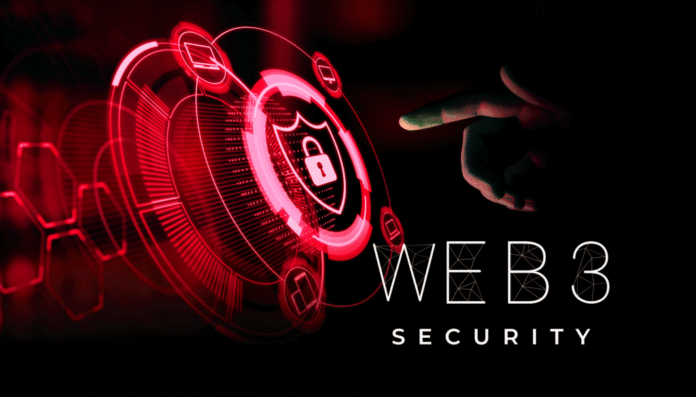Explore Blockchain & Web3 Security, covering threats, best practices, and the CIA model to secure decentralized systems and digital assets.
Introduction to Blockchain Security
In its most fundamental form, blockchain security consists of cryptographic mechanisms of control that ensure data integrity, confidentiality, and accessibility. Blockchain incorporates the use of cryptography between public and private keys to authenticate and authorize network users to ensure that only users with the correct private keys can execute transactions or updates. Cryptographic hashing guarantees that once data is stored in a block, any update would necessitate re-calculating hashes on the following blocks – a highly resource-intensive operation that helps deter any tampering. This unity and unanimity creates trust without the use of authority.
Major Blocks of Blockchain Security
Key Management and Access Control
Secure storage of private keys with Hardware security modules (HSMs), multi-signature wallets, cold storage, and role-based access controls protect against unauthorized actions and mitigate against stolen key risks.
Smart Contract Security
Before smart contracts are deployed, they are expected to pass through auditing, formal verification, and vulnerability scanning to prevent bugs or malicious code exploits.
Network Security Architecture
The blockchain infrastructure is secured with strong network segmentation, encryption of communication between nodes, firewalls, intrusion detection systems, and rate limiting of API access.
Consensus Mechanism Protection
Blockchain networks establish stake-based checks and balances, as well as penalties against bad actors, to ensure honest consensus.
Incident Response and Recovery
Workflow, secure communications, frequent security checks and periodic snapshot backup: Timely response to incidents and recovery in the event of disaster require documentation of workflows and creation of efficient channels of communication.
Web3 Security Principles
The foundation of Web3 is blockchain, designed to develop decentralized web applications to operate on peer-to-peer networks with no center. This decentralization can eliminate single points of failure that reduce colossal cases of data breaches. Cryptography is used to guarantee privacy and integrity of information, whilst consensus mechanism such as Proof of Work (PoW) and Proof of Stake (PoS) are used to secure transactions.
Important Web3 Security Features
- Decentralization: Spreads data between many nodes so that it becomes difficult to hack an entire network.
- Immutable Ledger: Ensures that once a transaction has been confirmed, it is immutable and cannot be tampered with.
- Smart Contracts: Automate processes with pre-determined rules to reduce human error and fraud, but requires considerable security audits.
- Identity and Access Management (IAM): Authenticates user identity, and authorizes access to confidential data and functions.
- Zero Trust Model: No implicit trust is assumed; verification is continuous.
- Privacy Enhancing Technologies: Zero-knowledge proofs (zk-SNARKs) allow transactions without disclosing sensitive data.
- Two-Factor Authentication (2FA): Adds an extra layer of security against unauthorized access.
- Approved Blockchains: Only authorized players can participate to maintain privacy of transactions.
Security Threats and Problems
Blockchain and Web3 systems have distinct vulnerabilities despite having security benefits. One of the most significant issues is the impossibility of making changes within blockchain; any mistakes or attacks may lead to irreparable losses, including loss of digital resources.
Common Security Issues
- Key Theft: Loss of private keys can cause irreversible asset loss.
- Smart Contract Bugs: Exploitable code vulnerabilities can lead to theft or data tampering.
- Phishing and Social Engineering: Attackers trick users into giving away keys or credentials.
- 51% Attacks: Majority control allows manipulation of transactions.
- Sybil Attacks: Fake nodes overwhelm the network and disrupt consensus.
- Node Vulnerabilities: Weak nodes provide entry points for attackers.
- API and Network Attacks: Exploitation of insecure APIs and communication channels.
Best Practices for Securing Web3 and Blockchain Systems
As a preventive measure, organizations and users need to ensure good security practices at technical and procedural levels:
- Encrypt Private Keys using AES-256 or stronger.
- Use Multi-Factor Authentication (MFA).
- Conduct Frequent Security Audits of smart contracts, code, and networks.
- Apply Firmware and Software Updates to patch known vulnerabilities.
- Harden Networks with firewalls, VPNs, and encrypted communications.
- Implement Role-Based Access Control (RBAC).
- Monitor with Nonstop Surveillance and Intrusion Detection.
- Prepare Incident Response Plans with tested recovery strategies.
- Avoid unverified third-party libraries.
- Provide User Education on phishing, key management, and social engineering.
The Role of Blockchain in Web3 Security (CIA Model)
When assessing blockchain via the Confidentiality, Integrity, and Availability (CIA) model, its strengths include:
Confidentiality
Blockchain uses public-private key encryption to ensure only authorized access. Even if attackers infiltrate the network, encrypted data remains secure.
Integrity
Cryptographic hashes and digital signatures guarantee that data cannot be altered without leaving a trace.
Availability
Decentralized, replicated ledgers ensure reliability and eliminate single points of failure.
As a whole, blockchain supports Web3 by providing verifiable, transparent, and trusted infrastructure.
Conclusion
Blockchain and Web3 bring about a new way of thinking about digital security that has decentralized trust and added a cryptographic guarantee to the system. They are more secure than traditional systems because of immutability, consensus, encryption, and smart contract automation. However, they also introduce vulnerabilities that must be addressed through audits, key controls, secured networks, and incident response plans.
By following best practices, Blockchain & Web3 Security will strengthen the foundation of the future internet and digital economy as safe and reliable platforms.



